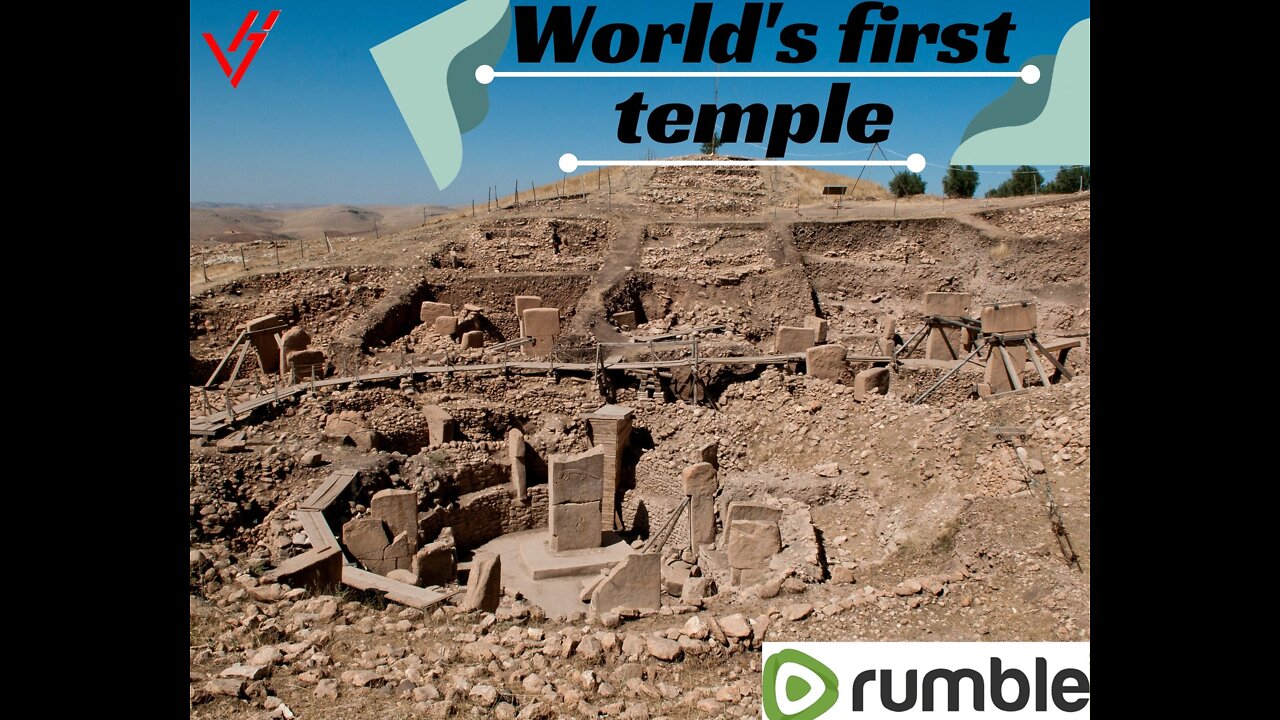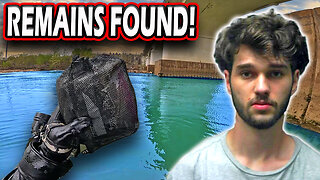Premium Only Content

World's first temple
00:00 - World's first temple
00:04 - 1 - The discovery:
Six miles from Urfa, an ancient city in southeastern Turkey, Klaus Schmidt has made one of the most startling archaeological discoveries of our time: massive carved stones about 11,000 years old, crafted and arranged by prehistoric people who had not yet developed metal tools or even pottery. The megaliths predate Stonehenge by some 6,000 years. The place is called Gobekli Tepe, and Schmidt, a German archaeologist who has been working here more than a decade, is convinced it's the site of the world's oldest temple.
"Guten Morgen," he says at 5:20 a.m. when his van picks me up at my hotel in Urfa. Thirty minutes later, the van reaches the foot of a grassy hill and parks next to strands of barbed wire. We follow a knot of workmen up the hill to rectangular pits shaded by a corrugated steel roof—the main excavation site. In the pits, standing stones, or pillars, are arranged in circles. Beyond, on the hillside, are four other rings of partially excavated pillars. Each ring has a roughly similar layout: in the center are two large stone T-shaped pillars encircled by slightly smaller stones facing inward. The tallest pillars tower 16 feet and, Schmidt says, weigh between seven and ten tons. As we walk among them, I see that some are blank, while others are elaborately carved: foxes, lions, scorpions and vultures abound, twisting and crawling on the pillars' broad sides.
01:39 - 2 - Sacred place for its people:
Schmidt points to the great stone rings, one of them 65 feet across. "This is the first human-built holy place," he says.
From this perch 1,000 feet above the valley, we can see to the horizon in nearly every direction. Schmidt, 53, asks me to imagine what the landscape would have looked like 11,000 years ago, before centuries of intensive farming and settlement turned it into the nearly featureless brown expanse it is today.
Prehistoric people would have gazed upon herds of gazelle and other wild animals; gently flowing rivers, which attracted migrating geese and ducks; fruit and nut trees; and rippling fields of wild barley and wild wheat varieties such as emmer and einkorn. "This area was like a paradise," says Schmidt, a member of the German Archaeological Institute. Indeed, Gobekli Tepe sits at the northern edge of the Fertile Crescent—an arc of mild climate and arable land from the Persian Gulf to present-day Lebanon, Israel, Jordan and Egypt—and would have attracted hunter-gatherers from Africa and the Levant. And partly because Schmidt has found no evidence that people permanently resided on the summit of Gobekli Tepe itself, he believes this was a place of worship on an unprecedented scale—humanity's first "cathedral on a hill."
With the sun higher in the sky, Schmidt ties a white scarf around his balding head, turban-style, and deftly picks his way down the hill among the relics. In rapid-fire German he explains that he has mapped the entire summit using ground-penetrating radar and geomagnetic surveys, charting where at least 16 other megalith rings remain buried across 22 acres. The one-acre excavation covers less than 5 percent of the site. He says archaeologists could dig here for another 50 years and barely scratch the surface.
03:33 - 3 - First time it was examined:
Gobekli Tepe was first examined—and dismissed—by University of Chicago and Istanbul University anthropologists in the 1960s. As part of a sweeping survey of the region, they visited the hill, saw some broken slabs of limestone and assumed the mound was nothing more than an abandoned medieval cemetery. In 1994, Schmidt was working on his own survey of prehistoric sites in the region. After reading a brief mention of the stone-littered hilltop in the University of Chicago researchers' report, he decided to go there himself. From the moment he first saw it, he knew the place was extraordinary.
Unlike the stark plateaus nearby, Gobekli Tepe (the name means "belly hill" in Turkish) has a gently rounded top that rises 50 feet above the surrounding landscape. To Schmidt's eye, the shape stood out. "Only man could have created something like this," he says. "It was clear right away this was a gigantic Stone Age site." The broken pieces of limestone that earlier surveyors had mistaken for gravestones suddenly took on a different meaning.
Schmidt returned a year later with five colleagues and they uncovered the first megaliths, a few buried so close to the surface they were scarred by plows. As the archaeologists dug deeper, they unearthed pillars arranged in circles. Schmidt's team, however, found none of the telltale signs of a settlement: no cooking hearths, houses or trash pits, and none of the clay fertility figurines that litter nearby sites of about the same age. The archaeologists did find evidence of tool use, including stone hammers and blades. And because those artifacts closely resemble others from nearby sites previously carbon-dated to about 9000 B.C., Schmidt and co-workers estimate that Gobekli Tepe's stone structures are the same age. Limited carbon dating undertaken by Schmidt at the site confirms this assessment.
The way Schmidt sees it, Gobekli Tepe's sloping, rocky ground is a stonecutter's dream. Even without metal chisels or hammers, prehistoric masons wielding flint tools could have chipped away at softer limestone outcrops, shaping them into pillars on the spot before carrying them a few hundred yards to the summit and lifting them upright. Then, Schmidt says, once the stone rings were finished, the ancient builders covered them over with dirt. Eventually, they placed another ring nearby or on top of the old one. Over centuries, these layers created the hilltop.
Today, Schmidt oversees a team of more than a dozen German archaeologists, 50 local laborers and a steady stream of enthusiastic students. He typically excavates at the site for two months in the spring and two in the fall. (Summer temperatures reach 115 degrees, too hot to dig; in the winter the area is deluged by rain.) In 1995, he bought a traditional Ottoman house with a courtyard in Urfa, a city of nearly a half-million people, to use as a base of operations.
Research: Vitor hugo Lizardi Leonardi
About my curiosities channel, I'm a very curious person about several subjects and this is a way to kill my curiosity and maybe yours too, and if possible subscribe to the channel leave your like to have new notifications about new subjects, thank you.
Good reading ,The 7 Habits of Highly Effective People
https://www.amazon.com.br/Habits-Highly-Effective-People-Powerful/dp/1982137274/ref=asc_df_1982137274/?tag=googleshopp00-20&linkCode=df0&hvadid=379726347250&hvpos=&hvnetw=g&hvrand=6784634493429849819&hvpone=&hvptwo=&hvqmt=&hvdev=c&hvdvcmdl=&hvlocint=&hvlocphy=20104&hvtargid=pla-908915591470&psc=1
Credito musica: The Basket Game- From "Raiders of the Lost Ark"/Score
Interpretada: John Williams, London Symphony Orchetra
Composição: John Williams
Fonte: Concord Records, Inc.
#first temple in the world,#temple,#world,#first,#discovery,#kilometres,#city,#southeast,#southeast turkey,#archaeology,#life,#nature,#peoples,#prehistoric,# tools,
#vitorleonardi
-
 2:45:42
2:45:42
Badlands Media
12 hours agoDevolution Power Hour Ep. 343: Pittsburgh Bridge Bombing, J6 Lies Exposed & the Regime's Final Play
88.2K43 -
 1:24:00
1:24:00
Man in America
15 hours agoMarket Crash, Tariffs, USD Collapse: Trump's Plan to END the Old World Order? w/ John Perez
69.3K69 -
 8:07
8:07
Colion Noir
10 hours agoShould You Carry Non-Lethal Weapons For Self Defense?
55.6K53 -
 14:53
14:53
Forrest Galante
5 hours agoAustralia's Top 5 Deadliest Animals
35.4K10 -
 3:18:47
3:18:47
DLDAfterDark
6 hours ago $3.51 earnedDLD Live! What's The "best" PDW?? Considerations For Trunk/Truck Gun & Gats in Bags & Backpacks
23.3K6 -
 15:25
15:25
Exploring With Nug
16 hours ago $20.96 earnedBag of Phones Found While Searching For Missing Man In River!
79.5K27 -
 3:58:27
3:58:27
fuzzypickles168
6 hours agoLate Nite Jam Session - Rock Band 4 | Was: EA Sports WRC | 1 John 2:1-17
20.7K -
![Nintendo Switch It UP Saturdays with The Fellas: LIVE - Episode #13 [Mario Kart 8 Deluxe]](https://1a-1791.com/video/fww1/97/s8/1/1/g/A/z/1gAzy.0kob-small-Nintendo-Switch-It-UP-Satur.jpg) 3:33:38
3:33:38
MoFio23!
15 hours agoNintendo Switch It UP Saturdays with The Fellas: LIVE - Episode #13 [Mario Kart 8 Deluxe]
48.9K -
 23:24
23:24
MYLUNCHBREAK CHANNEL PAGE
16 hours agoDams Destroyed Turkey
96.9K81 -
 7:24:43
7:24:43
SpartanTheDogg
9 hours agoPro Halo Player
49.7K1